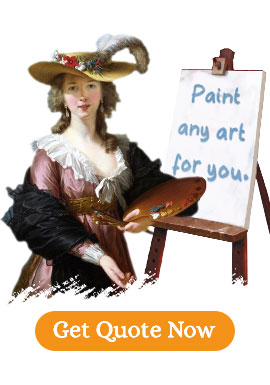Product added to cart
Paul Gauguin
All oil paintings of Paul Gauguin (19 Century, French, Symbolism) will be hand painted by our professional artists. Let HandmadePiece help you bring better museum quality art reproductions of Paul Gauguin to home. Photo preview of the finished art will be offered before delivery, global free shipping.
Brief Introduction to Paul Gauguin
"From now on, I will paint every day." - Gauguin
A French painter, Paul Gauguin (1848-1903) led a life marked by constant unconventionality. Born in Paris, his early years took him to live with his mother's family in Peru, followed by a stint in the French navy during his teenage years. Before his artistic pursuits, he worked as a stockbroker until the 1883 crash, ultimately leading him to embrace his true calling as a painter.
Gauguin's artistic journey is a testament to his unique life experiences. From his naval adventures to his financial career, each phase of his life contributed to his eclectic work. His unyielding passion for painting was the thread that wove his life into a tapestry of art.
The Concept of "The Gaze" in Art History
In the realm of art history, "The Gaze" is a pivotal concept that delves into the intricate dynamics of viewing art. It raises questions about the presumed spectator and their interaction with the artwork. The viewer's gaze, often associated with images of female nudes, carries connotations of eroticism, casting the female as an object of desire and sometimes fear, notably in the concept of "The Gaze".
John Berger, a renowned British art critic, made significant contributions to our understanding of 'the gaze' in his groundbreaking work 'Ways of Seeing' (1972). He recognized issues of power and subjugation, laying the foundation for a deeper exploration of the concept. Laura Mulvey, in her essay 'Visual Pleasure and Narrative Cinema' (1975), expanded these ideas, with a primary focus on film but echoing throughout art historical writing.
Laura Mulvey's essay "Visual Pleasure and Narrative Cinema" (1975) expanded these ideas, primarily focusing on film but echoing throughout art historical writing. The interpretation of "the gaze" varies based on how the spectator views the artwork and how the figures within the art piece "gaze" back. Roland Barthes, for instance, explored this in Rembrandt's "Syndics of the Cloth Makers' Guild," highlighting the gaze of the figures within the image, as they not only look at a presumed audience in the room but also seem to engage with the viewers, making the viewer's existence palpable.
In essence, discussions on "the gaze" transcend gender and sexuality and encapsulate how we perceive ourselves looking at art and at each other. This multifaceted concept challenges us to explore the complexities of human relationships and the act of looking itself.
Not found Paul Gauguin? Please request a quote for any art reproduction.


